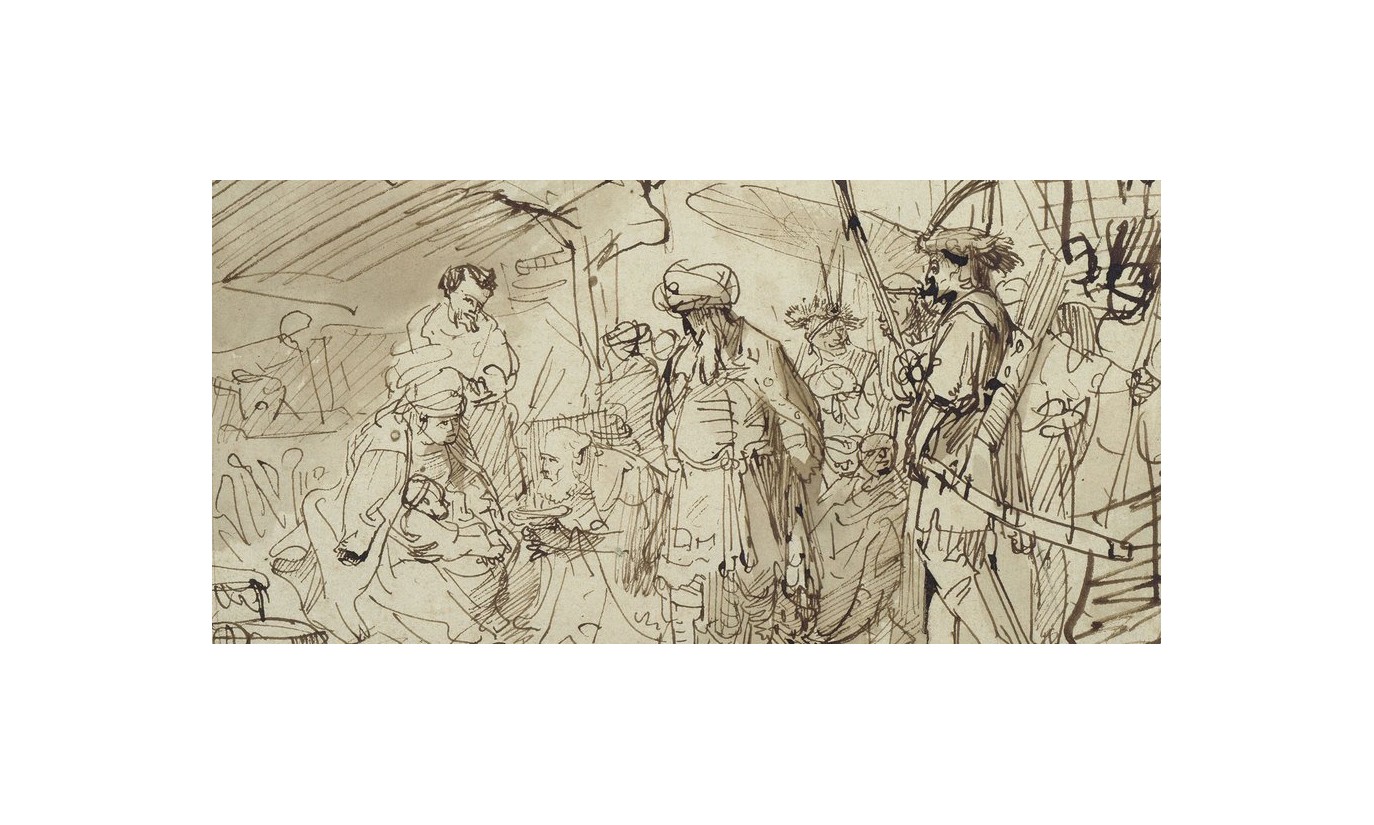
September 30, 2018
Graphic Art
Rembrandt or not Rembrandt?
Drawings from the Rembrandt School 24 August – 18 November 2018
A special exhibition of the Kupferstichkabinett – Staatliche Museen zu Berlin
Rembrandt or not Rembrandt? Drawings by the celebrated Dutch master have always been mixed up with those by his disciples and assistants who worked in the same style. Research carried out over the last years has led to a fundamental reappraisal of Rembrandt’s drawings that also affects the outstanding holdings of the Berlin Kupferstichkabinett. The exhibition in the summer of 2018 presents approximately a hundred of the best drawings by artists in Rembrandt’s circle as well as several originals by Rembrandt from our own collection and from other museums.

Gerbrand van den Eeckhout
Susanna und die beiden Alten, um 1635
Feder in Braun
© Staatliche Museen zu Berlin, Kupferstichkabinett / Jörg P. Anders
In recent years, the authenticity of Rembrandt’s drawings has greatly exercised the few experts working in this field – with astonishing results: More than half of the drawings listed as autograph in the magisterial catalogue raisonné compiled between 1954 and 1957 by Otto Benesch, the Viennese art historian and director of the Albertina, are now regarded as works by students and assistants. This has a major impact on the Kupferstichkabinett of the Staatliche Museen in Berlin, whose holdings of drawings by Rembrandt, his school and his circle are among the world’s largest.

Rembrandt Harmensz. van Rijn
Susanna im Bade, um 1636
Rötel auf Papier
© Staatliche Museen zu Berlin, Kupferstichkabinett / Jörg P. Anders
The reason for the uniformity of the drawings and, with it, for the confusion of autograph works by Rembrandt with drawings by other artists lies in the very nature of Rembrandt’s studio practice. Between the 1630s and the 1660s, the artist had numerous students and assistants, some fifty of whom we know by name; many others remain anonymous.

Jan Victors (zugeschrieben)
Christus wird zu Grabe getragen, um 1635-37
© Staatliche Museen zu Berlin, Kupferstichkabinett / Jörg P. Anders
Among this throng were young beginners and fully trained artists as well as interested laymen or dilettanti who were attracted by the artist’s reputation. Drawing was central to the training in Rembrandt’s studio. Students were expected to master biblical and historical scenes. They learned how to capture, compose and stage dramatic narratives in the medium of drawing, how to use light and shadow, the poses and expressions of the human figure.

Rembrandt Harmensz. van Rijn
Beweinung Christi unter dem Kreuz, um 1635-37
Feder in Braun, Spuren von Rötel und oxydiertem Bleiweiß
© Staatliche Museen zu Berlin, Kupferstichkabinett / Jörg P. Anders
Rembrandt showed them his own drawings which often served as direct models and teaching aids. Joint life drawing sessions in the studio and excursions to do landscape studies out of doors also formed part of the training, and the master and his students would often work on the same subjects, either in groups or parallel.

Arent De Gelder
Joseph vor Pharao, um 1661-1665
Feder in Braun, stellenweise gewischt, Deckweiß, auf Papier
© Staatliche Museen zu Berlin, Kupferstichkabinett / Jörg P. Anders
For Rembrandt’s students it was near-impossible to escape his formative influence – at least during the time they spent in his studio. It was not until later that some were able to shake off his powerful presence and develop a style of their own. Some even forged new paths in terms of technique. Others, however, remained forever beholden to Rembrandt’s manner.

Rembrandt Harmensz. van Rijn
Nathan ermahnt David, um 1660-1663
Feder in Braun, stellenweise gewischt, graubraun laviert, auf Papier
© Staatliche Museen zu Berlin, Kupferstichkabinett / Jörg P. Anders
It must be assumed that those drawings by Rembrandt and his students that were produced as part of the students’ training in the master’s studio were kept together in albums. Thanks to old inventories of Rembrandt’s property from 1656 and 1669, we know that the drawings were organised by subject – for example landscapes, animals, biblical scenes. Hardly anything was signed. A very small number of Rembrandt’s drawings are inscribed in his hand; drawings by students in training do not feature authentic signatures. In total, there were probably some 1500 to 2000 sheets. They came onto the market in several batches in 1658 and after the artist’s death in 1669. And from an early date, dealers and collectors alike were unable to tell works by Rembrandt and those of his students apart.

Constantijn Daniel van Renesse & Rembrandt Harmensz. van Rijn
Die Verkündigung an Maria, um 1652
Feder und Pinsel in Braun, schwarze und rote Kreide, braun und grau laviert
© Staatliche Museen zu Berlin, Kupferstichkabinett / Jörg P. Anders
A small selection of Rembrandt originals from the rich holdings of the Kupferstichkabinett and other collections invites visitors to take a closer look at the similarities and subtle differences between the works by Rembrandt and his school and provides a fascinating insight into the way drawing was taught in the master’s studio.

Carel Fabritius
Junges Paar zu Pferde, o.J.
Feder in Braun
© Staatliche Museen zu Berlin, Kupferstichkabinett / Dietmar Katz
The Kupferstichkabinett is following up on its critical catalogue of Rembrandt’s autograph drawings (published in 2006) with an inventory of its holdings of some 160 drawings that had previously been attributed to Rembrandt himself, but which have since been identified as works by artists in the master’s circle. The German catalogue raisonné is published by Sandstein Verlag, Dresden.

Leave a Reply Cancel Reply
All fields are required